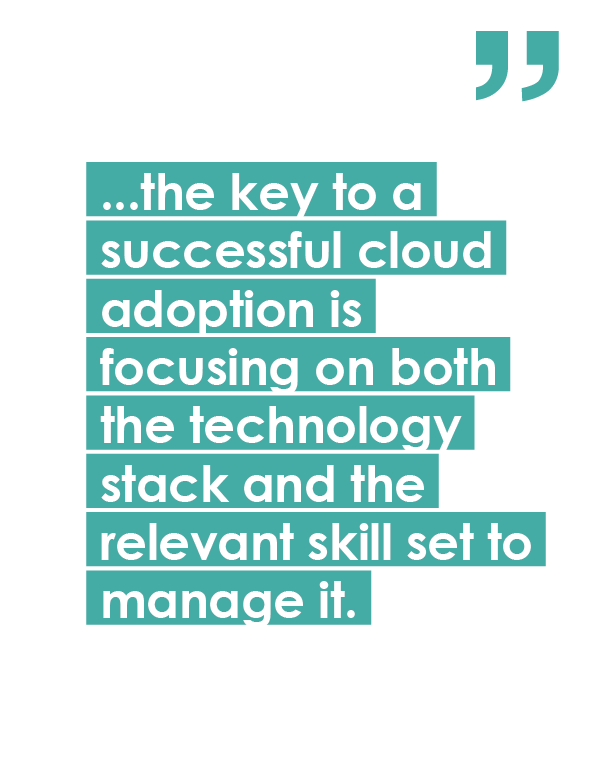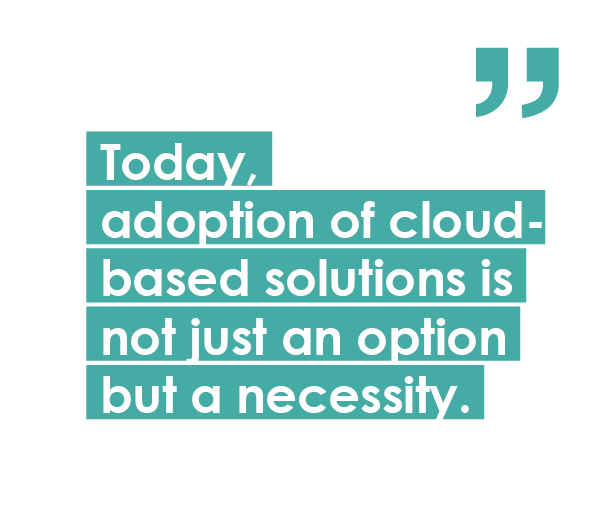The future leaders are technology leaders
Let me start with a recent observation. During the past year, leading enterprises achieved something remarkable. They were able to squeeze a decade of digital transformation into less than two years, and on top of that they are now growing revenues five times faster. Tomorrow’s leaders will be therefore those that put technology at the forefront, showed our Technology Vision 2021 report. In addition, the report expressed an opinion that the era of the fast followers is over. We think that shaping the future will require companies to become “masters of change”.
Leaders are relying on a strong digital core now and one of its key elements is cloud computing. Today, adoption of cloud-based solutions is not just an option but a necessity. Yet I think that cloud should be perceived primarily as an instrument unveiling new business value rather than an IT-only technology evolution. Using this instrument successfully requires organizations to abandon the siloed approach where architecture, security, IT infrastructure and application and operation teams are driving their own agenda. Instead, they should attempt to create integrated, holistic views as well as teams to plan, implement and evolve cloud usage.
This is not an easy task and may require either organizational changes or the creation of smart virtual integrated cloud teams working closely together to deliver more effective results. But all is doable with the right approach. As an example, compared to 2015 when we decided to start our cloud journey, Accenture’s own IT is now 95% in the public cloud and it is costing us half as much as our legacy delivery models.
 Unlocking full cloud potential requires a new mindset
Unlocking full cloud potential requires a new mindset
In September 2020, we announced the formation of Accenture Cloud First, a new multi-service group of 70,000 cloud professionals with the singular focus of enabling organizations to move to the cloud with greater speed and achieve greater value for all their stakeholders. Over the next three years, we want to help clients across all industries rapidly become “cloud first” businesses.
But this is not just about technology. “Cloud first” is rather a mindset interspersed throughout the organization. Companies that are contemplating only the technological aspects may struggle to realize the full business value from their cloud initiatives. To be more specific, we need to closely examine one of the pillars of successful cloud adoption at scale - the cloud strategy.
To minimize the risks of cloud usage companies should start with the definition of a cloud strategy
It’s well known that “If you have a hammer everything looks as a nail.” Cloud technologies today are such a powerful tool that they may be seen as a “hammer”. Imagine that your employee has recently found a great online cloud app for advanced AI based analytic that would instantly help to get more insights out of data from the financial department. All he or she needs to do is to upload a few exported documents from the accounting systems, agree to the provider’s conditions and download the result. It sounds perfectly reasonable and convenient to use such a time-saving tool until you realize your company’s confidential data were shared to a third-party provider which is not trusted.
 Building and living the right cloud strategy can prevent this from happening. Doing this requires a firm understanding of the cloud market in the local context on one side and of the company IT landscape and business objectives as well as applicable compliance and regulatory on the other side. Critical areas which should be addressed also include the operating model, security and compliance as well as sourcing approach.
Building and living the right cloud strategy can prevent this from happening. Doing this requires a firm understanding of the cloud market in the local context on one side and of the company IT landscape and business objectives as well as applicable compliance and regulatory on the other side. Critical areas which should be addressed also include the operating model, security and compliance as well as sourcing approach.
In my experience the key to a successful cloud adoption is focusing on both the technology stack and the relevant skill set to manage it. A lack of effective governance over cloud usage can quickly lead to loss of control and failure to realize the expected benefits. Moreover, aligning the security posture is a key element in each cloud adoption journey. Ongoing education is crucial for raising awareness about security among the employees to prevent incidents.
Where are we now?
So, is now the best time to start your cloud journey? Five years ago, the situation was radically different. We could not imagine that a company from a financial services sector in central Europe would agree to migrating its systems from on-premise to cloud services. IT infrastructure outsourcing was perceived as something “cheeky”. But times change. Today, even the banking industry that used to be most skeptical about cloud technologies recognizes the opportunities and benefits cloud usage may bring to keep up with the ever-evolving client and business needs. We partnered up with MONETA Money Bank to design and deploy new flexible and secure cloud-based infrastructure being the first adopter at scale in the region.
This is the path many companies have recently started to walk down. Across the CEE region and various industries, organizations realize that the change is both inevitable and invaluable. Today, we are in discussion with numerous of them about shaping their cloud strategy and adoption journey. Sure, the technology world is full of buzzwords. However, this is not the case with cloud. Those who recognize its value today will be the leaders of tomorrow.
Juraj Vaško, Cloud, Infrastructure & Engineering Lead, Accenture Slovakia



Follow us